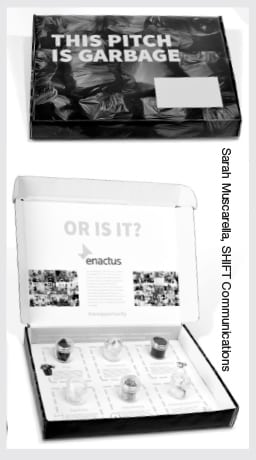
It’s a cautionary tale for PR pros grappling with the shift to digital platforms and consumers’ changing media habits. When JCPenney stopped publishing its catalog in 2010 the retailer thought that catalog shoppers would migrate online. Eventually the company learned that a lot of what it thought were online sales had their genesis in print. People went online to make purchases after being inspired by printed words and images. So JCPenney is doing what any brand worth its salt should: It is listening to its customers. Starting in March, JCPenney will send a 120-page home catalog to select customers’ mail boxes, not their inboxes.
(The story was reported earlier this month by The Wall Street Journal.)
The catalog will be a marketing piece designed to drive traffic, whether the customer decides to shop in a JCPenney store, online or via mobile or tablet, according to Kate Coultas, senior manager of media relations and corporate affairs for the retailer.
The home mailer is one part of a larger promotional mix that includes direct mail, pre-prints and other marketing vehicles.
“Our research has shown that our customers—particularly when it comes to shopping for home merchandise—still prefer to browse a traditional print piece, but will then go online or come into the store to make their purchases,” Coultas said.
Indeed, JCPenney’s decision is a stark reminder to PR pros that—despite the digital lurch throughout most business sectors—print remains a viable marketing tool.
BUILD AN EXPERIENCE
Of course, using print to get the word out or push product requires a different mindset than even a few years ago, when QR codes embedded in print materials were all the rage. To be effective, print has to be melded with the brand’s digital and social channels.
“You still need that sheet of paper, but it must be part of a digital experience,” said Christopher Penn, VP of SHIFT Communications. “The ultimate goal is for the audience to interact with the brand in both the real world and digital channels, but that doesn’t mean print is subordinate to digital.”
Late last year, for example, on behalf of Enactus, a non-profit organization dedicated to entrepreneurship and environmental responsibility, SHIFT distributed a media advisory that included a box titled, “This Pitch is Garbage.”
Open the box and it is filled with actual pieces of garbage in sealed containers, along with hashtags directing the media rep to explore the hashtag on Twitter and Instagram.
“You’re not going back in time,” Penn said, referring to the use of print. “You have to be aware of how people will respond to the print product and move into the digital realm.”
MEDIUM COOL
To get the biggest bang for their buck, PR and marketing pros also might try to use print differently, as opposed to delivering a message featuring ink on a flat piece of paper.
Last July APCO Worldwide created a direct mail campaign on behalf of a large railroad system looking to build a relationship with a community where the railroad was planning to expand its operation.
The mailing featured an envelope made to look like an intermodal railroad car, with extended ridges and extensive color saturation.
“It had a thicker weight and texture that was designed to stimulate a feeling and grab the consumer,” said Jason Meyer, director of digital strategy atAPCO Worldwide. Meyer declined to name the client. “We also created a unique design, with the intention of making the contents of the mailing very reusable for residents of the community.”
The direct mail product directed consumers to the railroad company’s Facebook page created specifically for the community. Enrollment and activity within the Facebook page spiked after the mailing, Meyer said.
“Print is not going away,” Meyer added. “There’s still a vast swath of the population that is interested in getting its hands on a piece of information via traditional ways.”
Tips for Using Print Media in a Digital Age

As our approach to new media has evolved to meet consumption trends, so must our strategy for how and when we use more traditional media. A 360-degree approach to storytelling is the only way to meet consumers on their own terms, especially the highly desired audience of millennial women. Waggener Edstrom has been taking a close look at women and retail. Here we share a preview of insights about how PR and marketing professionals can further tap into this audience and how it might apply to other consumers:
1. Digital diet. Our research shows that the increasingly screen-filled society we inhabit has left customers with a case of “infobesity.” Sometimes diving into a print catalog or magazine can be exactly the escape the customer needs. Forgoing print in favor of digital-only can risk missing this relationship-building touchpoint.
2. Blurred lines. We live in a world where bloggers are cover girls (see: Vogue and Lucky), magazine editors are TV personalities and digital stars synthesize newspaper headlines in email newsletters. Instead of chasing every channel individually, place your bets on a strategic handful of influencers who can tell your story to the right audiences in a way that spans them all.
3. Cover power. The digital landscape is noisy. Cover stories like the recent Wired piece on the reinvention of Microsoft featuring a headshot of the new CEO still have the power to set the agenda, cutting through the sea of links and rippling across channels to define what’s trending.
4. Creative catalog. Creativity shouldn’t be restricted by a medium. Retailers such as Anthropologie and Patagonia use their printed catalogs for storytelling and creative photography that sell a lifestyle as much as apparel. Challenge yourself to apply new tactics to old media (and vice versa) to enhance the experience for your target audience.
This sidebar was written by Tiffany Cook, executive VP, consumer, at Waggener Edstrom. She can be reached at [email protected]
CONTACT:
Jason Meyer, [email protected]; Christopher Penn, [email protected]
This article originally appeared in the February 2, 2015 issue of PR News. Read more subscriber-only content by becoming a PR News subscriber today.
